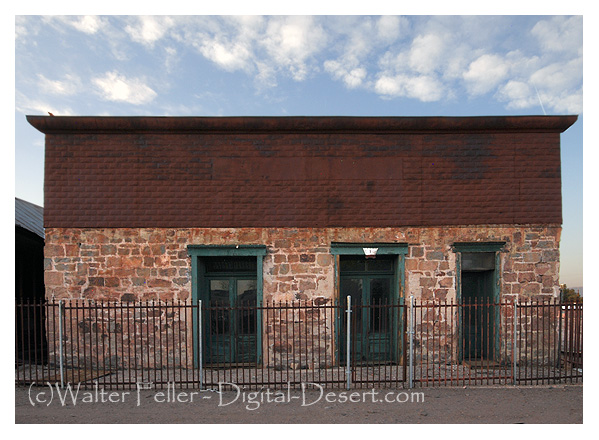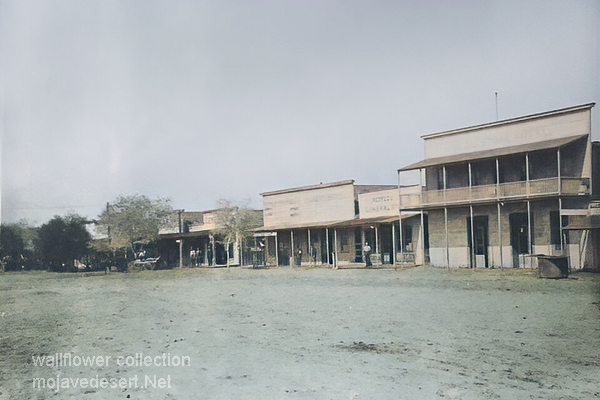Stone Hotel

The Stone Hotel of Daggett: A Desert Landmark with a Fireproof Spirit
Standing solid along Daggett’s dusty main street is a building that refuses to disappear—the Stone Hotel. Built of two-foot-thick stone walls in a time when most buildings were still made of wood, it has withstood the years, desert heat, and no fewer than four fires. Though it’s long been closed to the public, the Stone Hotel remains a cornerstone of Daggett’s colorful past and a registered California Point of Historical Interest.
The story of the Stone Hotel begins in the 1870s, when Daggett was growing as a railroad town. The original structure on this site was a wooden hotel and eating house built by the Southern Pacific Railroad. Unfortunately, it didn’t last long—it burned down almost immediately after construction. In 1883, Victor Van Briesen replaced the charred remains with something sturdier: a new two-story stone hotel. The ground floor served meals to hungry rail passengers and workers, while the second floor offered lodging.
Van Briesen sold the hotel portion to Seymour Alf in 1885, though he kept the restaurant space and tried to turn it into the Capitol Saloon. That venture fizzled quickly, and by the following year, Alf had taken over the whole operation and rebranded it as the Railroad Eating House.
In the years that followed, ownership of the building passed through several hands—likely due to the continued threat of fire. Around 1887, Aaron Winters, the man credited with discovering borax in Death Valley, acquired the building and gave it the name that stuck: the Stone Hotel. But even Winters couldn’t hold onto it. After losing it in a sheriff’s sale, the hotel eventually came under the ownership of Alex Falconer, who gave the place a second life.
After yet another fire in 1890, Falconer rebuilt the structure with some flair. He added a central staircase, a second-floor balcony, and a turret capped by a glass dome. That turret wasn’t just for looks—it held a lantern that could shine a signal beam all the way to Calico, announcing the arrival of new liquor at Falconer’s saloon next door. In those days, a signal like that could liven up the whole desert.

The Stone Hotel wasn’t just for miners and travelers. One of its most colorful regulars was Walter “Death Valley Scotty” Scott, the famous desert showman and conman. He reserved a room in the southeast corner and had his own private entrance. Scotty's love for the Stone Hotel made it part of his legend too.
Sadly, the building was struck again by fire in 1908, and this time the second story was not rebuilt. Still, the thick stone walls endured. For decades after, the ground floor stood as a reminder of Daggett’s golden age—freight wagons rattling down the road, trains hissing in the distance, and the buzz of travelers and locals passing through.
Daggett, Ca. circa 1902-04, note two-story Stone Hotel
Southern Pacific
Death Valley
Calico
Walter "Death Valley Scotty" Scott